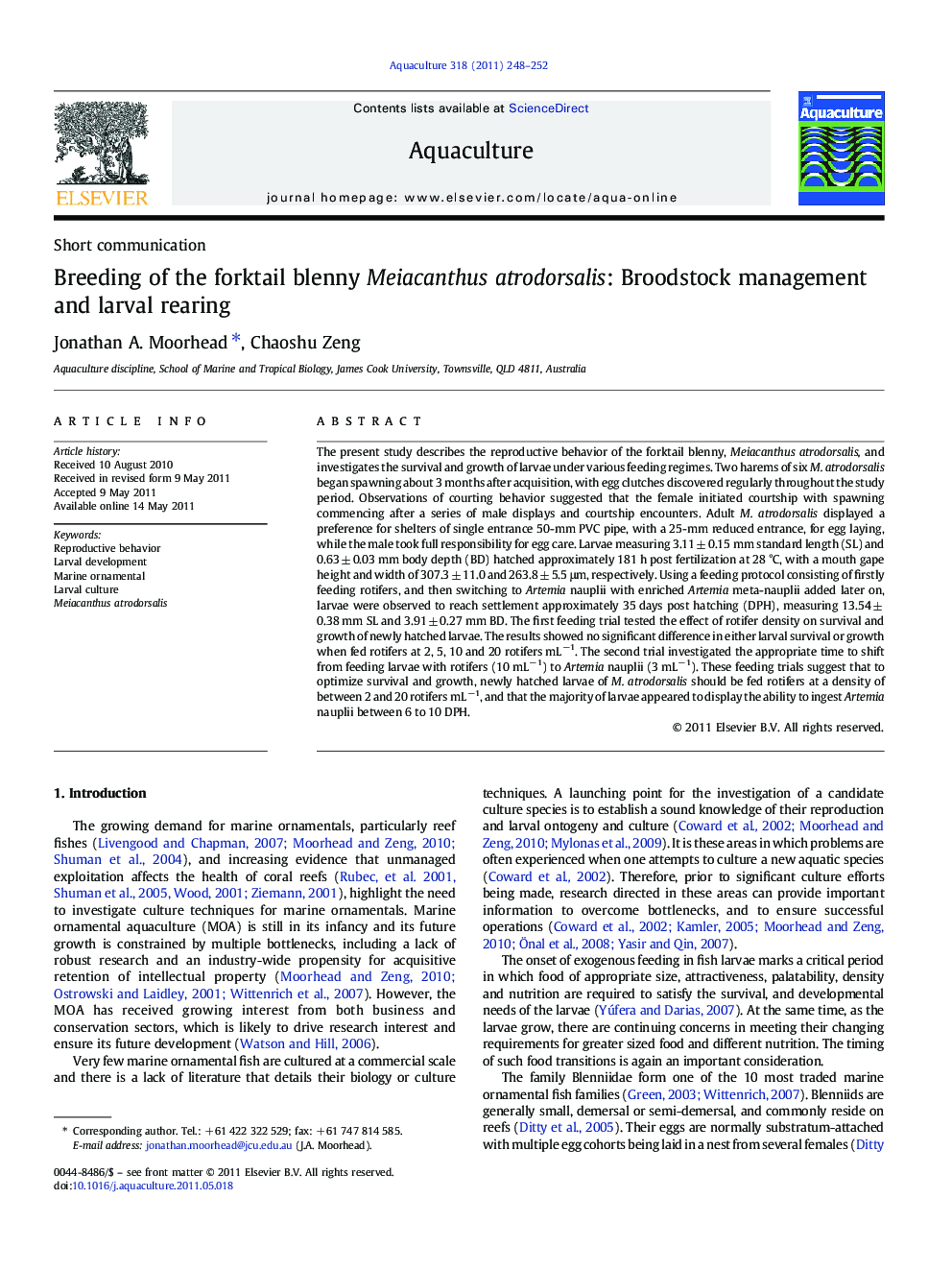| کد مقاله | کد نشریه | سال انتشار | مقاله انگلیسی | نسخه تمام متن |
|---|---|---|---|---|
| 2422929 | 1552906 | 2011 | 5 صفحه PDF | دانلود رایگان |

The present study describes the reproductive behavior of the forktail blenny, Meiacanthus atrodorsalis, and investigates the survival and growth of larvae under various feeding regimes. Two harems of six M. atrodorsalis began spawning about 3 months after acquisition, with egg clutches discovered regularly throughout the study period. Observations of courting behavior suggested that the female initiated courtship with spawning commencing after a series of male displays and courtship encounters. Adult M. atrodorsalis displayed a preference for shelters of single entrance 50-mm PVC pipe, with a 25-mm reduced entrance, for egg laying, while the male took full responsibility for egg care. Larvae measuring 3.11 ± 0.15 mm standard length (SL) and 0.63 ± 0.03 mm body depth (BD) hatched approximately 181 h post fertilization at 28 °C, with a mouth gape height and width of 307.3 ± 11.0 and 263.8 ± 5.5 μm, respectively. Using a feeding protocol consisting of firstly feeding rotifers, and then switching to Artemia nauplii with enriched Artemia meta-nauplii added later on, larvae were observed to reach settlement approximately 35 days post hatching (DPH), measuring 13.54 ± 0.38 mm SL and 3.91 ± 0.27 mm BD. The first feeding trial tested the effect of rotifer density on survival and growth of newly hatched larvae. The results showed no significant difference in either larval survival or growth when fed rotifers at 2, 5, 10 and 20 rotifers mL−1. The second trial investigated the appropriate time to shift from feeding larvae with rotifers (10 mL−1) to Artemia nauplii (3 mL−1). These feeding trials suggest that to optimize survival and growth, newly hatched larvae of M. atrodorsalis should be fed rotifers at a density of between 2 and 20 rotifers mL−1, and that the majority of larvae appeared to display the ability to ingest Artemia nauplii between 6 to 10 DPH.
Journal: Aquaculture - Volume 318, Issues 1–2, 27 July 2011, Pages 248–252